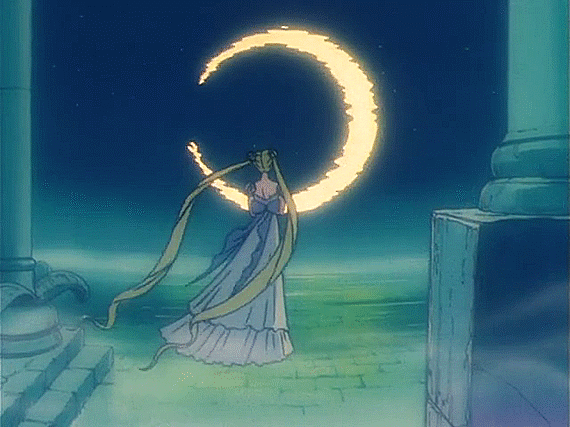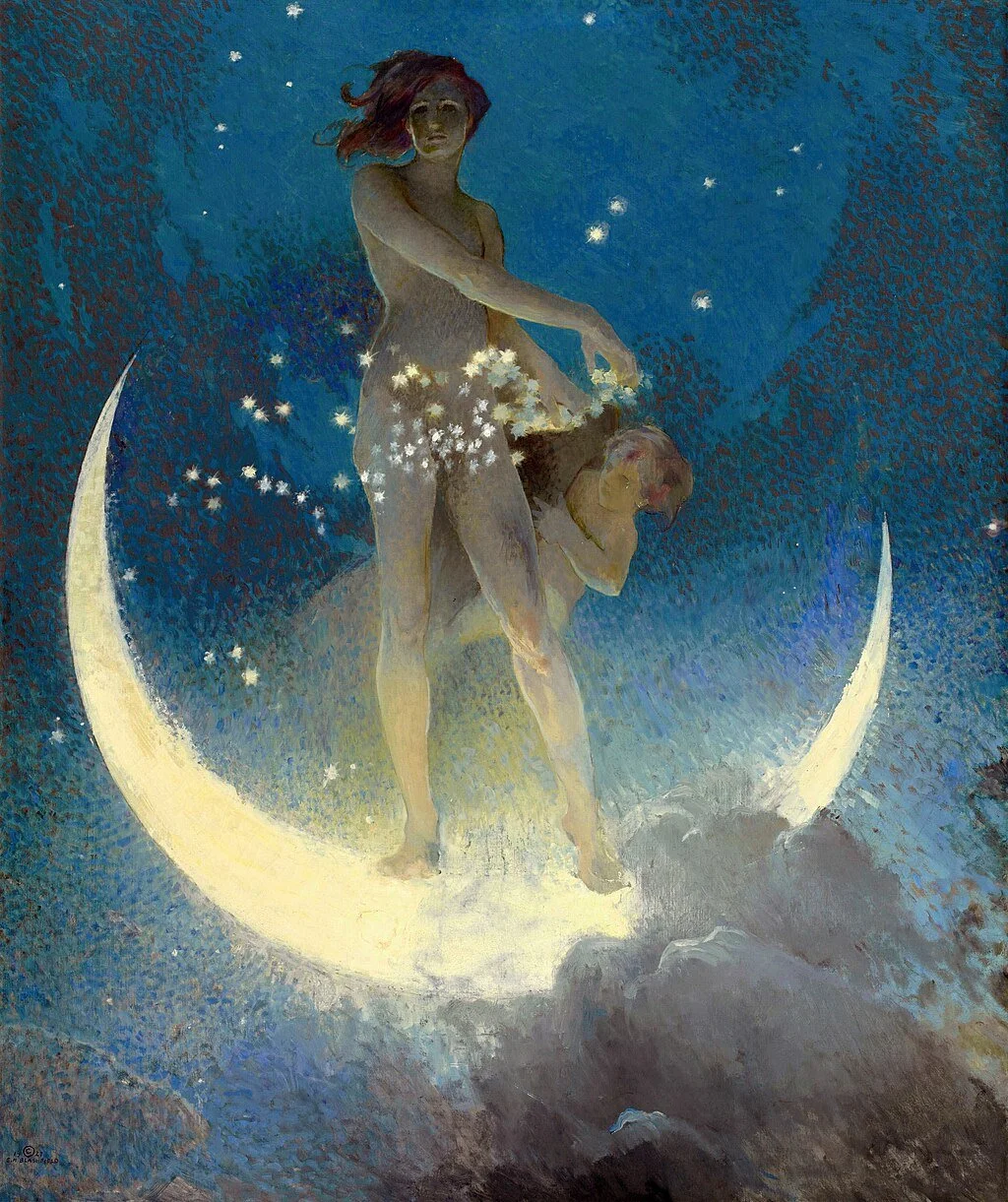Astrolatry: A Simple Guide to Worshipping the Stars and Planets
What is Astrolatry?
Astrolatry is the worship of the stars and planets.
Astrolatry literally means, ‘worship of heavenly bodies.’
Astrolatry is an ideal practice for anyone struggling to connect with a specific Pagan or witchy path.
The planets and stars don’t belong to any one culture, making them a convenient starting point that avoids potential cultural appropriation.
The word ‘astrolatry’ only came into use a few hundred years ago.
But the veneration of the stars and planets has a very ancient history…
Astrolatry in the past
The stars and planets have a long history of worship.
In fact, there’s an insane amount of star lore and mythology that could easily be the topic of an entire book…
Let alone a few paragraphs in a blog post.
So…
To spare my attention span and yours, I’ll just (very briefly) note a few highlights.
According to scholars, astral cults became common in the Levant due to Assyrian influence around 700 BCE.
The night sky took on a central role in ancient Babylonian religion.
The Babylonians closely associated their pantheon of deities with the seven classical planets—an idea the ancient Greeks and Romans would later adopt.
Interestingly, the earliest known astronomer was a Sumerian priestess of Nanna (the moon god) named Enheduanna.
You can still read some of Enheduanna’s surviving poems, which reflect the deep spiritual connection early cultures felt toward the heavens.
The Babylonians, in particular, were famous for meticulously studying the night sky.
In fact, they’re the first recorded culture to have developed a system of astrology, around the 2nd century BCE.
But they weren’t the only ones whose religion incorporated elements of astrolatry.
The ancient Egyptians, Chaldeans, and Sabians all had significant practices and beliefs rooted in the veneration and observation of the stars and planets.
For the sake of brevity, we’ll leave it there.
But it’s clear that reverence for the cosmos has been woven into human spirituality for millennia.
The Picatrix
I would be remiss if I didn’t at least mention this grimoire.
So, here it is.
The Picatrix is the Latin name for the 10th Century Arabic text known as Ghāyat al-Ḥakīm. Which translates to The Aim of the Sage.
The Picatrix is a grimoire of astrological magic.
This grimoire contains detailed information on planetary correspondences and how to craft planetary talimans.
There’s some philosophy too.
While the Picatrix is more about magic than worship. I’m specifically mentioning it here because it’s an incredibly significant grimoire rooted in the magic of the stars and planets.
I recommend looking into it if you’re interested.
How to Practice Astrolatry
As above, so below.
Emerald Tablet
It’s a big wide universe out there.
When you’re just starting out with astrolatry, it’s helpful to think about which part of the cosmos you feel most drawn to.
Trying to do everything is a recipe for overwhelm.
Instead, think about what you’re most interested in:
Is it the planets? If so, which one?
Is it a particular star or constellation?
Is it a specific deity or myth?
It’s also helpful to think about how you conceptualise the stars and planets. Are they archetypal energies, animistic spirits or gods in their own right?
Once you’ve narrowed down which part of astrolatry you’d like to focus on, you can go from there.
In the mean time, here are some other ways to practice astrolatry.
See you on the other side of the event horizon…
Create an Astrolatry altar
Bring a touch of stardust to your living space with an astrolatry altar.
I have two options for you: the first is an all-purpose altar, and the second is simple, with a planetary-focus.
Option one:
Images of stars and planets
Offering bowl
Incense burner
Black, silver and gold candles
Planetary glyphs
Sun, moon or star tarot cards
Blue goldstone, labradorite, moonstone
Option two:
Procure seven tumble stone crystals; one to represent each of the seven classical planets.
You can choose crystals purely based on planetary colour or by meaning.
Moon: white, moonstone, selenite
Mars: red, carnelian, garnet
Mercury: yellow, agate, clear quartz, fluorite
Jupiter: blue or purple, amethyst, lapis lazuli
Venus: green or pink, rose quartz, emerald, aquamarine
Saturn: black, onyx, tourmaline, obsidian, jet
Sun: yellow or gold, sunstone, citrine
Arrange the crystals around a white pillar candle in a dish (dressed with oil if desired) in an aesthetically pleasing manner.
I’d go for three stones on one side of the candle, and three on the other.
The final stone, representing the planet whose energy you’re currently engaging with, should be placed in the center in front of the candle.
Whenever you want to honour a specific planet’s energy, place the appropriate crystal in the centre.
Symbolically, it becomes your focus.
You can further embellish this altar with specific oils, sprays, and planetary incenses, which can be burned or sprayed as offerings or used for anointing.
Add things sparingly, but in a way that works for you.
This altar can also act as a travel or discreet altar if kept in a bag or a box.
give offerings
One of the oldest ways to connect with any form of spiritual intelligence is by giving offerings.
You can give offerings to specific planets and stars, or just to the cosmos in general.
Here are some ideas basic offerings ideas:
Candles
Flowers
Honey
Incense
Olive oil
Wine
Devotional activities
Work with planetary Deities
This is where you get your research on!
Learn about all the different star and planet related deities from worldwide mythology.
If you feel drawn to a specific deity, you can learn more about them, set up an altar and make offerings to them on the appropriate planetary day.
Daily Planetary Devotions
The days of the week are associated with the seven classical planets in occultism.
Monday: Moon
Tuesday: Mars
Wednesday: Mercury
Thursday: Jupiter
Friday: Venus
Saturday: Saturn
Sunday: Sun
This is actually the timing structure I prefer.
The moon’s a bit overhyped… 🌚
Waiting for the correct moon phase just to do a working, will literally kill any desire in me to actually do it.
Waiting for the right day is less of an issue; I simply work with the energy of the current day in a way that suits the ritual.
The result?
I don’t die of boredom and the working actually gets done.
A advantageous ending all-round.
You can use the construct of the seven days of the week to perform rituals, magical workings and make offerings.
On a specific planetary day, you can:
Light a candle in the planet’s colour.
Say a short prayer or make an offering to that planetary deity.
Pick a crystal associated with a planet and speak an appropriate affirmation into it, then carry it around with you.
Wear jewellery or clothes in a specific colour to attune yourself.
Daily Planetary Activities
You can align your mundane acitivities with the energy of the planetary days.
For example, meditation and inner work can be performed on Mondays.
Here are a few ideas to get you started:
Monday: meditation, journalling, tending to the home, cleansing baths
Tuesday: exercise, walking, physical tasks
Wednesday: research, reading, studying, running errands
Thursday: financial planning, studying
Friday: self-care, socialising, baking sweet treats
Saturday: decluttering, goal setting, cleaning
Sunday: gratitude journalling, spending time outside, creative projects
Celebrate the Astrological Calendar
As the seasons turns, so too does the astrological wheel.
The astrological calendar begins with Aries at the advent of spring.
As the Earth moves through each astrological season, find ways to honour these changes.
You can set up an altar themed to each season and create specific goals or magical workings aligned with its energy.
Observe the Nights Sky
Take some time to observe the stars, notice patterns and movements, and reflect on the insights they might offer you.
Since many people are forced to live in places with insane amounts of light pollution…
(Good luck seeing the stars from a large city).
An alternative is to keep track of what’s happening astrologically instead.
Sources
Atsma, A. J. (n.d.) Sky Gods & Goddesses. Theoi Greek Mythology. Available at: https://www.theoi.com/greek-mythology/sky-gods.html (Accessed: 1st August 2025).
Harper, D. (n.d.) Etymology of astrolatry. Online Etymology Dictionary. Available at: https://www.etymonline.com/word/astrolatry (Accessed: 1st September 2025).
Pasulka, D. (2019) American Cosmic: UFOs, Religion, Technology. New York: Oxford University Press.
White, G. (2023) Star.Ships: A Prehistory of the Spirits. New York: Stars Edge Media.







